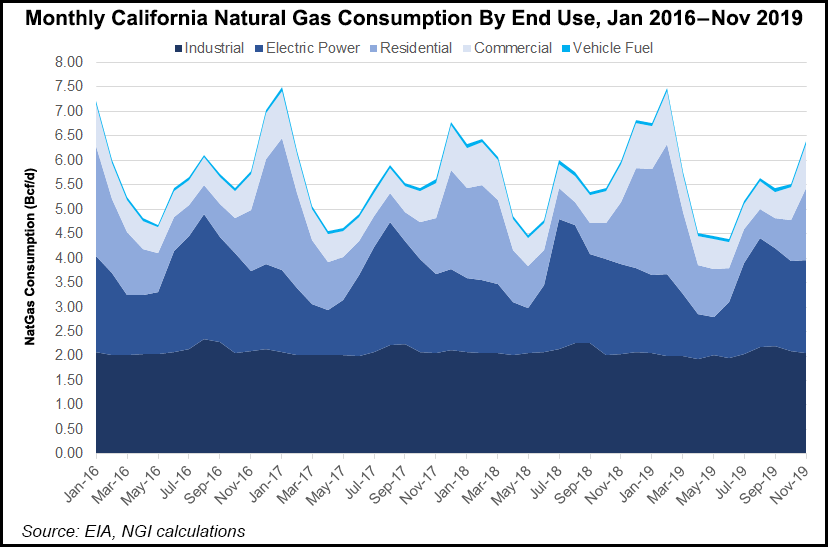Regulatory | NGI All News Access
California Decarbonization Plans Face Pushback from High Power Rates
California’s aggressive plans to slash carbon emissions by cutting back on fossil fuel use could be derailed by high electricity rates, experts said earlier this month in a legislative hearing.

Because of the pressure on natural gas providers from the tilt toward electrification, the state’s high costs for electricity could serve as a buffer against the growing push to de-emphasize gas use in residences and businesses.
At a hearing of the California Assembly Committee on Utilities and Energy, the state’s Legislative Analyst’s Office (LAO) cautioned that excessively high rates are a potential barrier to various plans for electrification of the housing and transportation sectors, two major sources of greenhouse gas (GHG) emissions.
From 2008 to 2018, investor-owned utilities in California doubled their collective rate bases to $59.3 billion from $29.3 billion, “triggering corresponding increases in general rate case revenue requirements,” said LAO’s principal fiscal/policy analyst Ross Brown.
Brown cited the reasons for the “substantially” higher rates, which include recovering fixed costs in the volume rate while power consumption is declining, spreading fixed costs over a smaller base, and the inclusion of various mandated programs.
“High electricity rates discourage adoption of some technologies, such as electric vehicles or electric appliances,” Brown said. He said electrification is “the key driver” to achieve GHG emission reductions and various climate change mitigation goals. “The evolution of the energy sector is already well on its way.”
Economist James Bushnell of the University of California at Davis attributed high electricity rates to power utilities not segregating fixed costs from the volume rates, as well as the state’s required environmental programs. “The large California electric utilities recover all their costs through the variable fee, and have no fixed charge,” he said.
© 2024 Natural Gas Intelligence. All rights reserved.
ISSN © 1532-1231 | ISSN © 2577-9877 |
